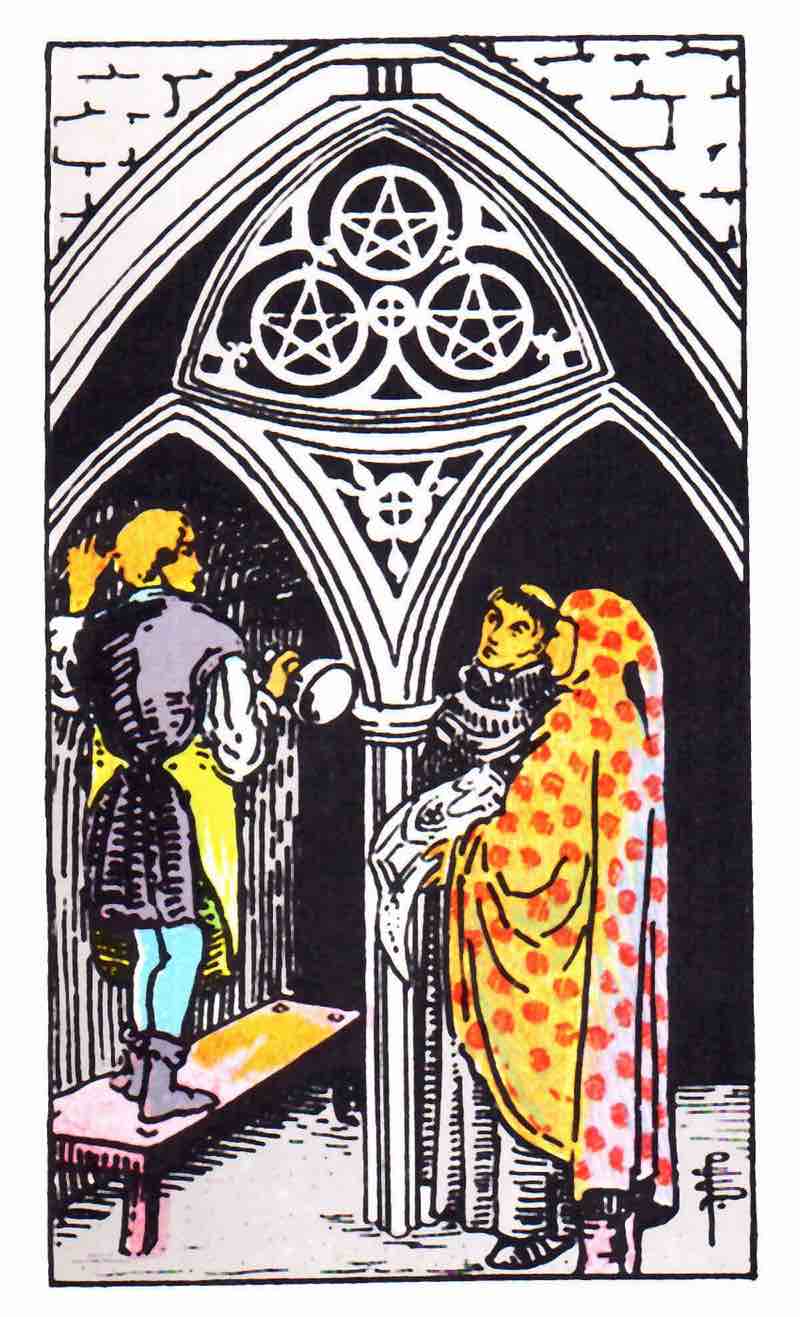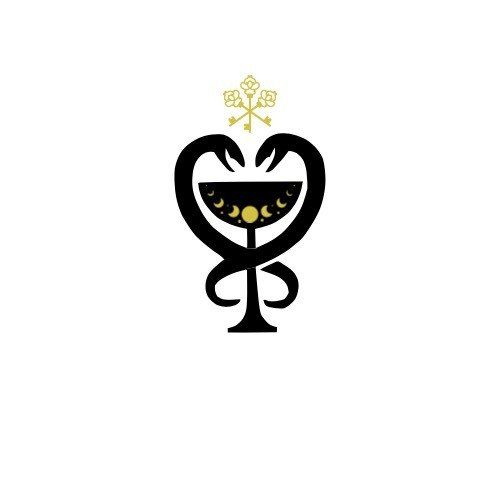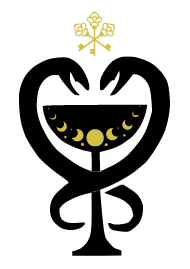A Tale of Three Pentacles
All for one and one for All! The Three of Pentacles is here to remind us that every illusion of independent success is fortified by the efforts and contributions of many. Corresponding with Mars in Capricorn, we are going to touch on the medicine of practical collaboration in the realms of ambition and expansion.

As we move through the threshold between 2022 and 2023 I feel overjoyed to be collaborating with the Three of Pentacles. The Three of Pentacles corresponds with Mars in Capricorn and the dates December 31st through January 9th. Because it is a three, it also corresponds with the Empress (number 3, major arcana) implying that the mission at hand is one of beauty, creativity, and love despite the austere nature of our host sign of Capricorn. For our purposes we may interpret these correspondences as getting sh*t done (Mars) by embracing radical practicality (Capricorn) in the realm of The Empress (Venus.) In the Colman-Smith depiction we see three people conversing beneath a cathedral arch adorned with three pentacles. They have distinct uniforms, implying that they are each bringing a unique skillset to this work environment.
The first collaborator wears a humble gray frock and appears to be the member of clergy assigned to oversee this project. They match the cool gray stone from which our cathedral is constructed, connecting them to the physical structure and our corresponding sign of Capricorn. Our second wears flowing red robes and holds a scroll confidently in their hands. They are our architect, an agent of the planet Mars engulfed in crimson and brandishing the masterplan to divide and conquer the project. Our third collaborator stands on a bench wearing a work apron with a mallet in hand. They are our mason who transmutes the verbal guidance of the teammates into a tangible result to be enjoyed by all. They are a true agent of The Empress.
The Three of Pentacles is here to remind us that everything we do in life is an act of collaboration. So often, we feel the external pressure to achieve success independently. Our capitalist culture reveres the ability to overwork, overachieve, and over-accumulate as a badge of honor (think Four of Pentacles, Ten of Wands, or maybe more gently the Nine of Cups.) CEO’s maintain outlandish salaries as company-elected Godheads while folks on the ground floor are dealt shekels in exchange for providing the functions essential to the company’s dealings. This illusion of independent success removes us from the wisdom of an ecosystem where organisms thrive as a direct result of mutual support and diversity. In other words, it takes a village. In
A Tale of Three Cups
I spoke very briefly of my humble legacy of establishing independence in youth. During this stretch of dates that correspond with our Three of Pentacles, I find myself reflecting on what my quickly approaching ten year anniversary of self-sufficiency means to me. Once worn like a badge of honor, I find myself wholly prepared to sacrifice the notion of independence on the altar of 2023.
Author, organizer, Octavia Butler* aficionado, and GHT’s designated archetypal Hierophant (number 5, major arcana) adrienne maree brown was the first to introduce the word interdependence to me in her earthmoving 2017 offering
Emergent Strategy.
I find the medicine of interdependence gorgeously represented in the following passage:
*If you are unfamiliar with SciFi pioneer and prophetic world-builder Octavia Butler, please treat yourself to a deep dive to learn more about this visionary and her work
“E-V-E-R-Y-T-H-I-N-G—is connected. The soil needs rain, organic matter, air, worms and life in order to do what it needs to do to give and receive life. Each element is an essential component. Organizing takes humility and selflessness and patience and rhythm while our ultimate goal of liberation will take many expert components. Some of us build and fight for land, healthy bodies, healthy relationships, clean air, water, homes, safety, dignity, and humanizing education. Others of us fight for food and political prisoners and abolition and environmental justice. Our work is intersectional and multifaceted. Nature teaches us that our work has to be nuanced and steadfast. And more than anything, that we need each other—at our highest natural glory—in order to get free.” Brown, Adrienne M.
Emergent Strategy: Shaping Change, Changing Worlds. AK Press, 2017.
I used to think that success was a one letter word. I can handle it. I’ll take care of it. I’ve got this. I did it. There was a certain ecstasy in rising to the occasion to keep myself afloat. I worked multiple jobs, attended massage therapy school on nights and weekends, and paid bills the moment they entered my hands to ease my icy terror of debt accumulation. I used my scrappy sensibilities as armor to shield myself from the external factors that led me to leap from the nest of my childhood home prematurely. Any insinuation that I was at risk felt like an insult to my ability to provide for myself. I wanted to be the hero in my own story, and I wanted to do it in a way that felt true to myself. But the thing about a hero’s journey is that it does not, cannot, take place in a vacuum. Heroes almost never journey alone. They encounter allies, enemies, friends, and foes that all contribute to the texture of their journey.
I’d like to pull from one of my all time favorite pop culture references to better emphasize the need for interdependence over independence. J.R.R Tolkien’s timeless classic “The Lord of the Rings” trilogy is one of the world’s most beloved hero’s journeys ever taken. The saga takes place in a fictional world called Middle Earth and begins in Hobbiton, Shire. The Shire is home to the hobbits. Extremely small of stature, hobbits build petite cottages in the bellies of The Shire’s rolling hills. The Shire is a picture of safety, seemingly sheltered from the reach of malevolent forces in the outside world. Here, we meet our protagonist Frodo Baggins, his best friend and gardener Samwise Gamgee, and fellows in troublemaking Merry Brandybuck and Pippin Took.
In the film adaptation, Frodo’s story begins with the arrival of Gandalf the Grey, a wise wizard and friend to the hobbits of The Shire. He rides into town on a horse drawn carriage singing “The Road Goes Ever On”*
*”The Road Goes Ever On” is a composition by the character Bilbo Baggins, the protagonist of Tolkien’s “The Hobbit” which takes place in Bilbo’s youth. Bilbo Baggins is the uncle of Frodo Baggins. This crossover reference and Gandalf’s entry scene were created for the film adaptation.
Later that day, Frodo’s uncle Bilbo Baggins makes an unexpected and bizarre announcement at his 111th (or “eleventy first” in the text) birthday celebration of his intentions to “disappear.” Sliding his hand into his pocket, he slips the title ring onto his finger and vanishes from sight. Through the chaos and shock of the crowd, Gandalf realizes what has just happened and takes off for Bilbo’s home. The One Ring to rule them all is the most powerful and corrupt of the 20 total rings of power forged by the Dark Lord Sauron in the second age in an attempt to lure the rulers of Middle Earth into temptations of power and domination. Its goal is always to return to its master, gradually corrupting all who come to possess it into obsession and loss of humanity. Well aware of the danger in his possession, Bilbo swallows fiery temptation and surrenders the ring to Gandalf before embarking on a final adventure far from home. The ring ultimately represents the temptation for independent domination. Frodo returns to the house to discover Gandalf smoking his pipe and staring pensively at the ring. After confirming his fears, Gandalf seals the ring in an envelope to avoid direct contact with the tainted relic. Forged in the fires on Mount Doom in Mordor, the ring can only be destroyed in the belly of the beast in which it was created.
What Frodo is about to learn will change his life and the course of history forever. Pure of spirit and determined to save Middle Earth from spectral and living forces that support the Dark Lord Sauron’s vision, our protagonist must leave The Shire and journey to Mount Doom to destroy the One Ring once and for all. His best friend Samwise is determined to champion Frodo on his quest and to keep a promise to Gandalf, famously saying “I made a promise, Mr. Frodo. A promise. Don’t you leave him, Samwise Gamgee. And I don’t mean to, I don’t mean to.” Frodo and Sam then travel over the threshold together into the farthest from home they have ever been.
The trilogy follows the journey taken by these two companions and the cast of friends and foes that they meet on their way. By the time Frodo has gained the protection of the full Fellowship of the Ring, he will find himself immersed in the support of their diverse skills and resources. Gandalf the Grey (and eventually, Gandalf the White) is our magician who provides wisdom, love, and sorcery. Aragorn, (*swoon*) a ranger of the north sworn to Gandalf to protect The Shire and rightful heir to the throne of Gondor is a loyal protector and skilled horseman and fighter. Gimli, a dwarf and descendant of Bilbo’s old traveling companions, is a fierce axe-wielding warrior who deeply influences the route taken by our fellowship. Legolas is an elven warrior and master of bow and arrow. Boromir is a man and a prized warrior of Gondor. And last but not least, our mischievous Merry and Pippin, who join Frodo and Sam by fateful happenstance while crossing paths at the edge of The Shire.
Through the misty mountains and beyond, our fellowship divides and conquers the tasks at hand through skill sharing. This motley crew uses teamwork to balance the needs of the whole, ultimately leading them to complete the seemingly impossible mission at hand. Even our tragic villain Gollum (once a hobbit who devolved into a malignant cave dwelling creature over 500 years of possessing the One Ring) and more gently Merry and Pippin (who seem to cause chaos and error at every turn) play integral roles in the success of our hero.
Near the brink of death and exhaustion with only the veiled guidance of the creature Gollum, Frodo and Sam climb up the side of Mount Doom. Frodo stands at the edge with a glazed look in his eyes. Sam pleads with him through tears to release the ring into the fire, but Frodo turns around and says “The Ring in mine” slipping it onto his finger and so from site. In one final betrayal of self and other, the creature Gollum renders Sam unconscious, leading to a battle between Gollum and an unseen Frodo at the edge of Mount Doom. Gollum bites off Frodo’s finger and takes the ring along with it. Drunk with the power of the ring, Gollum loses all awareness of his situation. Frodo and Gollum engage in the final fight to the death for the One Ring. They fall unwittingly and unwillingly from the cliff edge and Gollum catches the ring on his finger just in time to be slowly engulfed by the molten core of Mount Doom. Hanging on the edge of oblivion from nine fingers, Frodo is begged by Samwise to take his hand and save himself. There is a look in Frodo’s eyes that seems to wonder if it would be easier to surrender to the flames than to accept this final act of selflessness from the unsung hero and guardian of his journey.
By taking Sam’s hand he not only saves himself from a fiery death, he metaphorically allows the power of friendship (or the ”all”) to conquer the power of domination (or the “one.”) A thousand hands turned the soil on Frodo’s journey to destroy the One Ring, each playing unique and integral roles entirely their own. Each loyal warrior, magic maker, seer, spirit of the trees and forests, piece of armor, enemy, friend, horse, fire, and each stale loaf of lembas bread contributed an essential function to destroy the concept of absolute power and save Middle Earth. Being the hero in this story is not about individual success, but rather the assembly of many to destroy that very notion for the upliftment of the whole.
The Three of Pentacles is here to remind us that achievement can only happen in connection and that everyone has a unique skillset to bring to the revolution. So this month, I celebrate my ten year anniversary of leaving my “Shire” with a Declaration of Interdependence. To every person I’ve loved, every person I’ve lost, every artist I’ve ever been nourished by, every farmer who has fed me, every roof that has provided me shelter, every dog who has trustingly offered me their belly, every example I’ve lived by, every cautionary tale, every server who has ever brought me my coffee and called me “baby,” every friend I’ve made, and every friend that was simply there all along: I couldn’t have done any of it without you.
So when the Three of Pentacles presents itself to you, think first and foremost about teamwork. Whatever your mission, goal, question, or concern, this is not something that can be conquered as a singular entity. So often, we think of “ego” in terms of conflation or self-absorbedness but I find that most often our ego is the part of us that expects more-than-human ability from ourselves. It is the voice in our head that tells us we should be able to handle it all, and that we are failures for the mere fact that we are designed to be interdependent beings inside of an intelligently evolved ecosystem. The Three of Pentacles is the ultimate toast to interdependence and a gentle reminder that “absolute power corrupts absolutely.” My wish for you is a team of support as diverse and sophisticated as a living ecosystem; where every role, no matter how small, may propel you toward collaborative victory.
Cheers,
Sarah

